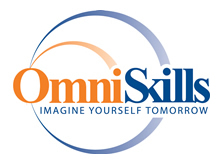CPS FACILITATION SERVICES
ABOUT CPS FACILITATION
Creative Problem
Solving (CPS) is a structured
process for solving problems or finding opportunities,
used when you want to go beyond conventional
thinking and arrive at creative (novel and useful) solutions.
(You can see an illustration of the model here.)
When facilitating CPS, the most important word in the description above is "structured."
Whenever CPS is used, someone is responsible
for facilitating the process; that is, for making process-related
decisions, for using the structure correctly and
effectively, and for assuring that the goal is reached - that a novel, useful, and implementable solution is found.
An important distinction in CPS facilitation is between
process and content. Process concerns
the use of the process to achieve the client's goals. Content refers
to the subject matter: the issue at hand about which
CPS is being used.
TYPES OF CPS FACILITATION
Facilitating for yourself. With strong
CPS skills, you can facilitate yourself through the process
to help in your own thinking and problem solving. In
this case, you are involved in both process and content.
It is helpful to try and keep the two aspects separate
in your mind, so that at any moment you are focused on
one or the other.
Facilitating for one person. If you
have CPS facilitation skills, you can serve as facilitator
for another person. This client is responsible for content,
and you are responsible for process. In this situation,
the client is working without a resource group, so the
facilitator may find it necessary to step in from time
to time to assist with the thinking; that is, to be involved
in the content. For the most part, however, the
facilitator will focus on managing the CPS process.
Facilitating for a group. When working
with a group, the CPS facilitator is the process expert,
who serves the client's content needs through the application
of the process. Ideally, a group facilitator is completely
neutral, and works solely on process, leaving content
issues to the client (the problem owner) and the resource
group.
FACILITATOR BEHAVIORS
How would you know a good facilitator when
you saw one? Here are a list of positive actions
and behaviors you will see from successful
CPS facilitators.
- Flexible: adapts the process to the situation
- Knowledgeable: knows the process and how to use it
- Neutral: stays in the process and stays out of
the content
- Inclusive: encourages participation from all group
members
- Prepared: meets with the client to gather data, to
determine if CPS is the right process, and to determine
the initial direction
- Organized: for group sessions, has
all materials ready and at hand before the session
begins
- Responsible: has the best interests
of the client in mind, and ensures
that the client's needs are met; remembers that the
client knows best
- In control, but not controlling: manages
the group, the process, and the time, but is transparent
to the outcome
- Pays attention: is aware of group
dynamics, energy levels, and the client's needs
HOW OMNISKILLS FACILITATES THE CPS PROCESS
CPS facilitation begins with a confidential
client meeting, in which the facilitator helps the client
assess the situation (top of the model, below), gathers
key data (bottom of the model), and determines what CPS
stage (center of the model) would be the appropriate
starting place. Also covered: advice on selecting a resource
group, session logistics, CPS
session roles, and other
considerations, such as whether CPS is the right approach.
CPS is a good fit when the client has ownership of
the issue (that is, the right and the ability to address
the problem); is motivated to take action
(otherwise the process results are wasted); and welcomes imaginative thinking (otherwise the
process results will be unusable).
A CPS session brings together the client,
a resource group, and the facilitator, to work on the client's
behalf. The facilitator
guides the session and makes process decisions (which tool?
for how long? what next?) while continuously checking in
with the client to make sure the process is meeting the
client's needs.
The goal of the session will depend on the situation,
and each is unique. For instance, the client meeting may
show that the situation is
not as far along, and the group session will focus on the
broad need to Imagine the Future. Or,
the client meeting may show that the desired future state has been identified, so that the focus
of the group session will be on Finding the Questions that, if answered, will
help reach the desired future state. Or, if the client meeting shows that there is in place a concise question, the
group session will begin with Generating
Ideas.
At the end of the session, the facilitator will help the
client determine the next steps, which may be within the
CPS process (if more work is to be done), or building a Plan for Action to implement the solutions.
IS CPS RIGHT FOR YOU?
It is if you want
new thinking, new ideas, new solutions. It is if you
find you are stuck, if you can't solve a certain problem,
or set of problems. It is if you aren't even sure
what the problem is. It is if you are missing opportunities.
It is if you want to take advantage of the opportunities
before you.
NOW WHAT
Here are some choices:
CONTACT US WHEN YOU ARE READY
When you're ready to
talk to us about teaching you this process or facilitating
a problem-solving session, just holler.
